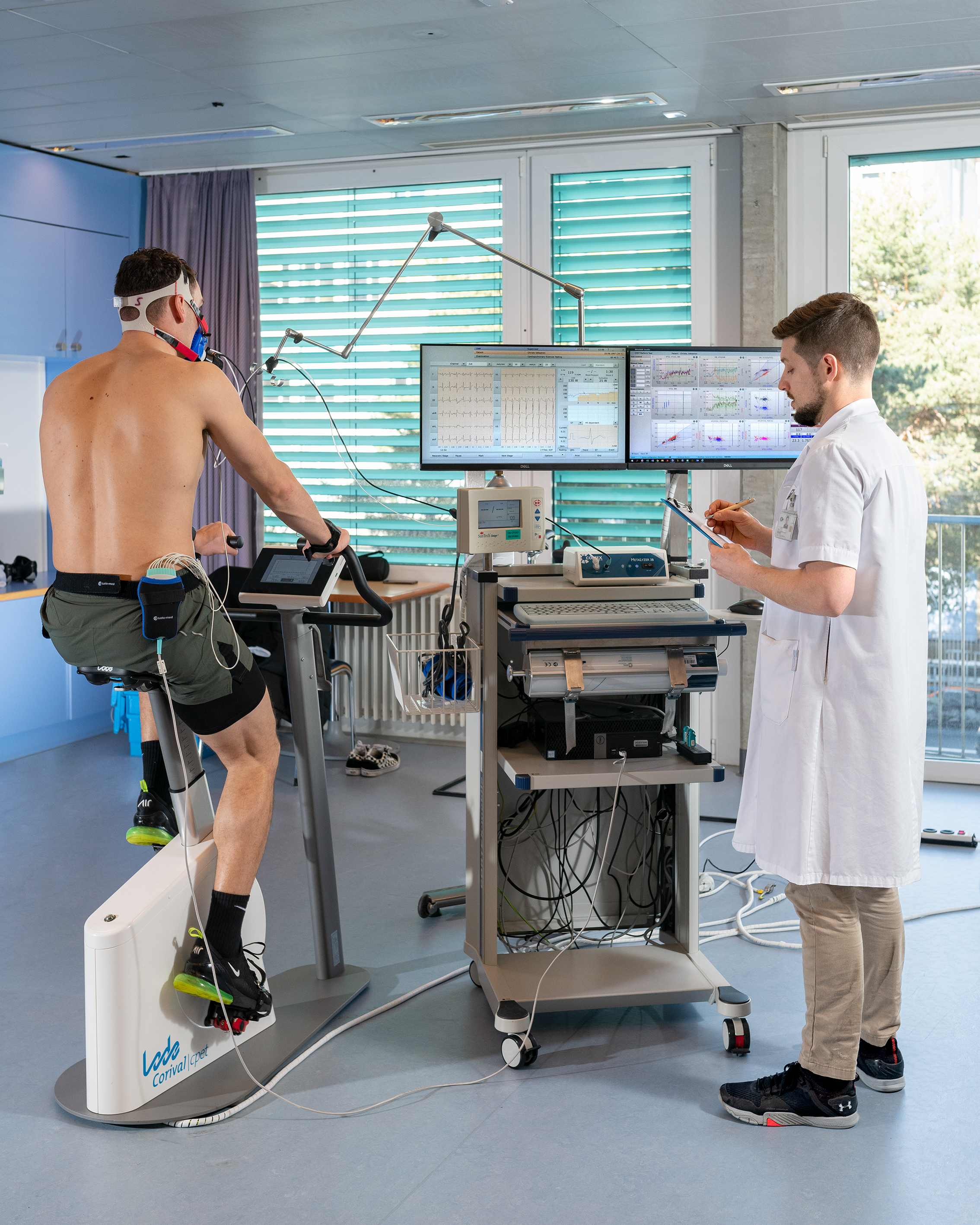Stress test or Cardiopulmonary-exercise testing (CPET)

The stress test using metabolic gas exchange (i.e. a CPET) is suitable for routine exercisers and both amateur and elite level athletes. This examination will determine your maximal and sub-maximal exercise capacities and will provide valuable physiological data for exercise initiation, sports rehabilitation, and/or advanced training. It can also be used as a screening tool for coronary artery disease and exertional arrhythmias.
The principle goal is to analyze the response of your cardiovascular system as you transition from rest through light exercise and ultimately to maximal exercise capacity. The examination is performed using various validated protocols, either on a bicycle or a treadmill, as determined by your baseline level of fitness and your sport training goals.
We routinely conduct three types of exercise examinations. Depending on your personal indication, we may utilize a cardiopulmonary-exercise testing (CPET - stress test with gas exchange analysis), ergometry (stress test with electrocardiographic monitoring), or a performance test (analysis of training zones with lactate measurement and/or gas exchange analysis).
Main indications
- Evaluation of exercise-related complaints, including unexplained performance decline, among trained individuals or amateur and elite level athletes.
- Assessment of exercise safety among athletes and highly active people with established cardiovascular disease.
- Assessment of athletes seeking at all performance levels seeking an evaluation of their physical condition and training program.
Are there any risks associated with the examination?
The stress test is generally well-tolerated. The risks associated with exercise testing are similar to those during high-intensity physical activity performed outside of the exercise laboratory. Fainting, cardiac rhythm disturbances, or falls may occur but are rare. Continuous monitoring is performed during the test to minimize these risks and all tests are supervised by clinicians with experience in the management of rare test complications.
How should you prepare?
During the tests, we will ask you to push to your maximal effort.
Items to bring with you for the tests
- Sports outfit and shower essentials, sports bra for women.
- List of current medications, if available, and recent blood test results (cholesterol, blood sugar).
- If the test is conducted on a stationary bike, specific clothing and if available clip-in shoes are suggested (compatible pedals include: Shimano MTB/SPD, Shimano road/race, or Keo Look; if using other brands, please bring your own pedals and shoes). Otherwise, standard sports shoes are suitable.
Preparation prior to testing
It is essential that you arrive well-rested to ensure that results are both reliable and a reflection of your true peak exercise capacity.
- We recommend you avoid high-intensity training or competition within 48 hours before the test (light training up to 1 hour is allowed).
- Abstain from alcohol consumption for 24 hours prior to testing.
- Prepare for the test as if it were an athletic competition with usual steps including adequate rest, nutrition, and hydration.
- Avoid snacks, especially sugary ones (energy bars, gels, etc.), within 60 minutes prior to testing.
- Notify us in advance of any illnesses or injuries that could negatively affect the test or prevent its completion. Testing can be rescheduled if an illness develops prior to testing that may affect your ability to exercise.
- Refrain from donating blood for three weeks prior to the test.



